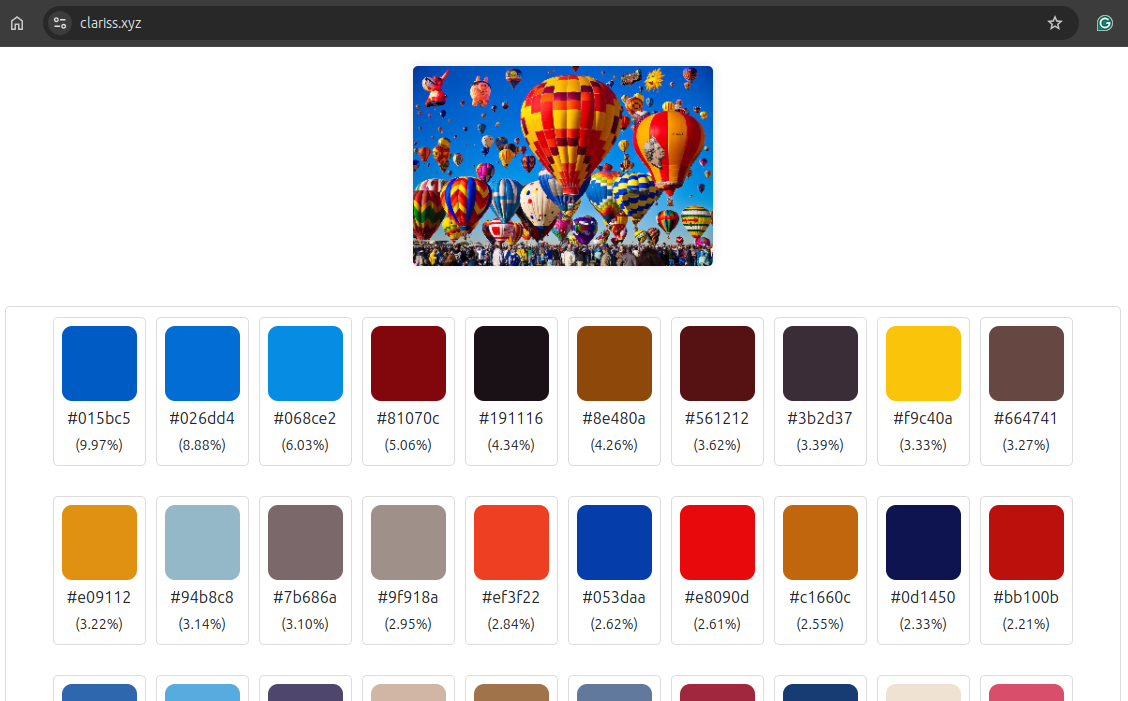Color is a powerful element in design and art that can evoke emotions, set moods, and communicate ideas. The hues and shades we encounter daily influence our aesthetic sense and can be a rich source of inspiration. One of the most fascinating ways to harness the power of color is by extracting color palettes from images. This practice not only enriches creative projects but also opens up new avenues for innovation across various fields. Here’s how color palettes derived from images can fuel creativity and inspire new ideas.
The Science of Color Palettes
A color palette is a collection of colors used together in a design or artwork. Extracting these palettes from images involves analyzing the predominant colors within the image and creating a cohesive set of hues that reflect the visual essence of that image. This process can be done using digital tools and software that analyze color data and generate palettes based on the most prominent colors.
Creative Applications in Design
- Graphic Design: In graphic design, color palettes play a crucial role in establishing visual identity and brand consistency. Designers can use color palettes extracted from images to create striking graphics that resonate with specific themes or emotions. For instance, a color palette derived from a serene landscape image can inspire designs for wellness brands, creating a calming and harmonious visual experience. Conversely, a vibrant palette from a lively street scene might be perfect for dynamic, youthful brands.
- Interior Design: The impact of color in interior design cannot be overstated. By using color palettes from images—whether they be from nature, art, or everyday scenes—interior designers can craft spaces that reflect desired moods and styles. A color palette inspired by a beach sunset might bring warmth and tranquility to a living room, while a palette from a bustling cityscape could inject energy and vibrancy into an office space.
- Fashion: Fashion designers often turn to color palettes to guide their clothing collections. Extracting colors from inspirational images, such as historical art, natural landscapes, or even cultural artifacts, can lead to unique and cohesive fashion lines. For example, a palette drawn from the rich textures of a traditional tapestry can inspire a collection that combines historical elegance with modern trends.
Enhancing Visual Storytelling
Color palettes from images can also enhance visual storytelling. In photography and film, the choice of colors is crucial in conveying mood and atmosphere. Filmmakers and photographers can use color palettes derived from stills or scenes to ensure consistency in their visual storytelling. A color palette from a dramatic, stormy sky might be used to enhance the tension in a film scene, while pastel tones from a calm, sunny day might convey a sense of peace and nostalgia.
Boosting Creativity in Art
Artists often seek new sources of inspiration to break creative blocks. Color palettes extracted from images can provide a fresh perspective and inspire new artistic directions. For instance, an artist might derive a palette from a photograph of an urban sunset and use those colors to create a series of abstract paintings that explore themes of transition and change. Similarly, a palette inspired by a vintage photograph could lead to artwork that blends historical elements with contemporary styles.
Integrating Color Palettes into Digital Content
In the realm of digital content creation, color palettes can be used to create visually appealing and cohesive digital assets. Whether designing a website, creating social media content, or developing marketing materials, incorporating color palettes from images ensures that content remains engaging and aligned with brand identity. Tools like Adobe Color, Coolors, and Canva allow users to extract color palettes from images and apply them to their digital designs, streamlining the creative process and maintaining visual consistency.
Innovating with Color Trends
The use of color palettes from images can also help identify and set trends. By analyzing popular or emerging images in various fields, designers and marketers can spot trends in color preferences and adapt their strategies accordingly. For example, a surge in images featuring earthy tones might indicate a growing trend towards sustainability and natural aesthetics, prompting designers to incorporate these colors into their upcoming projects.
Practical Tips for Extracting Color Palettes
-
Use Online Tools: Utilize tools like Clariss Palette Generator to extract and create color palettes from images. It offers features to extract color palettes from images and visualize them.
-
Experiment with Variations: Don’t be afraid to experiment with different variations of extracted palettes. Adjusting brightness, saturation, or contrast can lead to unique and unexpected results.
-
Incorporate Multiple Palettes: Combining palettes from different images can yield interesting and dynamic results. Experiment with blending hues from various sources to create rich, layered designs.
Conclusion
Color palettes derived from images are a treasure trove of inspiration and creativity. They provide a bridge between the visual elements we encounter daily and the creative projects we undertake. By harnessing the power of color, designers, artists, and content creators can craft compelling, harmonious, and innovative work. As we continue to explore and utilize color palettes from images, we unlock new possibilities and deepen our connection with the visual world around us.
Embrace the richness of color palettes from images, and let them guide your creativity in ways you’ve never imagined. The colors of the world are waiting to inspire your next masterpiece.
